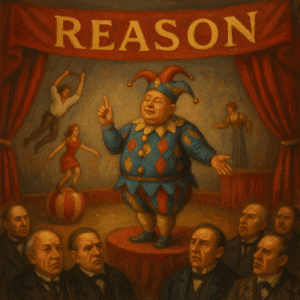Plato’s Critique of Painters: An Exploration of Imitation, Deception, and the Pursuit of Truth

In The Republic, Plato presents a profound critique of art and its role in society, particularly through the lens of his views on painters. For Plato, the act of painting is not a creative or truth-bearing endeavor but a mere imitation (mimesis) of the physical world, which itself is already an imperfect reflection of the world of Forms. The philosopher-king, as the highest ideal of human knowledge, must guide the soul toward higher truths, and Plato argues that art, especially visual art such as painting, distracts from this intellectual journey. Plato’s thoughts on painters, situated in The Republic Book X, offer a scathing evaluation of the deceptive nature of art, its capacity to corrupt the soul, and its ability to mislead people away from the search for truth. This essay will examine Plato’s critique of painters, with reference to key quotes from The Republic, and explore the philosophical implications of his ideas in the context of both ancient and modern art.
The Painter as Imitator: A Step Further from Reality
Plato’s primary critique of painters is grounded in his concept of mimesis—imitation. According to Plato, artists do not create original work but merely replicate the material world, which is already a flawed copy of the higher, ideal world of Forms. In The Republic, he writes:
“The painter … makes a likeness of the visible world, not of the true world, and the object he imitates is the product of appearances, not of reality.” (Book X, 595b)
Here, Plato argues that painters, in their attempts to imitate reality, are two steps removed from the truth. The material world itself, which painters represent, is an imperfect and mutable shadow of the unchanging world of the Forms—abstract ideals that exist beyond the sensory realm. Painters thus create representations of representations, further distorting the truth. The visible world is a mere shadow of the true, unchanging reality, and the painter, by imitating it, only reproduces that shadow.
Plato’s view is deeply influenced by his metaphysical framework, wherein the Forms are the true reality, and the physical world is only a reflection of those perfect, abstract ideas. For example, the “perfect” concept of a chair exists in the realm of the Forms, and any physical chair is merely an imperfect manifestation of that ideal. In this light, a painter who depicts a chair is merely imitating the physical world, which itself is an imitation of the ideal. The painter’s work, therefore, is far removed from any objective or true representation of reality.
The Deceptive Nature of Art
Plato goes further to criticize art’s potential for deception. Since art appeals to the senses and emotions, rather than to reason and intellect, it has the power to mislead its audience into believing in false representations of reality. He writes:
“The painter … deceives us into believing that his pictures are real things, but they are not real.” (Book X, 596a)
This statement underscores Plato’s concern that art, particularly visual art like painting, misleads the viewer by creating the illusion of reality. Painters have the ability to craft images that appear lifelike but, upon closer inspection, are empty imitations that provide no true knowledge. Instead of encouraging the viewer to engage with the rational or philosophical dimensions of existence, art manipulates emotions and appeals to a lower, less intellectually rigorous part of the soul. This is particularly dangerous, according to Plato, because it undermines the soul’s capacity for higher understanding and wisdom.
In the case of painters, their works are seen as not only shallow but also potentially corrupting. Art stirs up emotions and desires that can mislead the individual from the true pursuit of virtue and wisdom. In Plato’s words:
“The soul of the man who is involved in the art of painting or any similar imitation is corrupted.” (Book X, 595d)
This corruption stems from the fact that, instead of elevating the soul toward the Forms and higher truth, art keeps individuals anchored in the sensory world, encouraging them to focus on superficial appearances. For Plato, this is not merely a trivial issue but a matter of profound philosophical importance, as art undermines the soul’s connection to the true, abstract world of Forms.
The Problem of Art’s Emotional Appeal
One of the most significant aspects of Plato’s critique of painting is his emphasis on art’s emotional appeal, which he argues detracts from the pursuit of intellectual knowledge. While the philosopher seeks to guide the soul toward reason, understanding, and the eternal truth of the Forms, the painter appeals to emotions, creating a bond with the viewer through aesthetic pleasure or emotional response. Plato writes:
“The painter, in making his pictures, does not aim at truth or the representation of reality, but at pleasing the eye of the beholder.” (Book X, 595c)
Art, by focusing on sensory pleasure and emotional reaction, bypasses intellectual engagement with the deeper truths of existence. Plato, in his ideal society, seeks to cultivate a rational, philosophical approach to life, and thus art that appeals to the senses is seen as detrimental. The role of the philosopher, according to Plato, is to help individuals transcend the material world of appearances and move toward the realm of unchanging, eternal truths. Art, in its emotional appeal and sensory focus, distracts from this higher pursuit and thus hinders the soul’s development.
Art as a Corruption of Society
Finally, Plato argues that the widespread use of art, particularly in a society that values appearance over substance, can lead to the moral corruption of the population. In the Republic, he expresses concern about the moral and educational influence of art, especially in the context of the young. If children are exposed to art that depicts falsehoods, immoral actions, or deceptive representations, they may internalize these values and become misled in their moral development. Plato writes:
“If they [the youth] are exposed to false images of the gods or of heroic actions, they will live false and corrupt lives themselves.” (Book X, 607b)
Thus, Plato’s critique of art is not simply about its failure to represent truth but about its potential to corrupt individuals and societies by promoting false values, superficial ideals, and deceptive appearances. In his ideal city, Plato calls for strict regulation of art to ensure that it supports the moral and intellectual education of the citizens, guiding them toward truth, virtue, and the pursuit of wisdom.
The Legacy of Plato’s Critique
Plato’s critique of painters in The Republic remains a cornerstone of philosophical thought on the role of art in society. His ideas about imitation, deception, and the intellectual limitations of sensory-based knowledge challenge the way we traditionally think about art. While modern art has moved far beyond the classical ideals of representation, Plato’s concerns about the potential for art to deceive, distract, and mislead remain relevant.
Plato’s rejection of painting as a legitimate form of knowledge ultimately stems from his belief in the higher, abstract reality of the Forms. By positioning art as an inferior imitation of reality, Plato underscores the importance of philosophy as the only true path to wisdom. While his critique may seem harsh, it invites us to consider the purpose of art in our lives and its role in the pursuit of deeper understanding.
Today, while we may not fully agree with Plato’s dismissal of art, his critique raises important questions about the nature of representation, the relationship between truth and illusion, and the role of art in shaping our perceptions of the world. Art may not be a direct path to truth, but it remains a powerful tool for expressing and confronting the complexities of the human experience.





